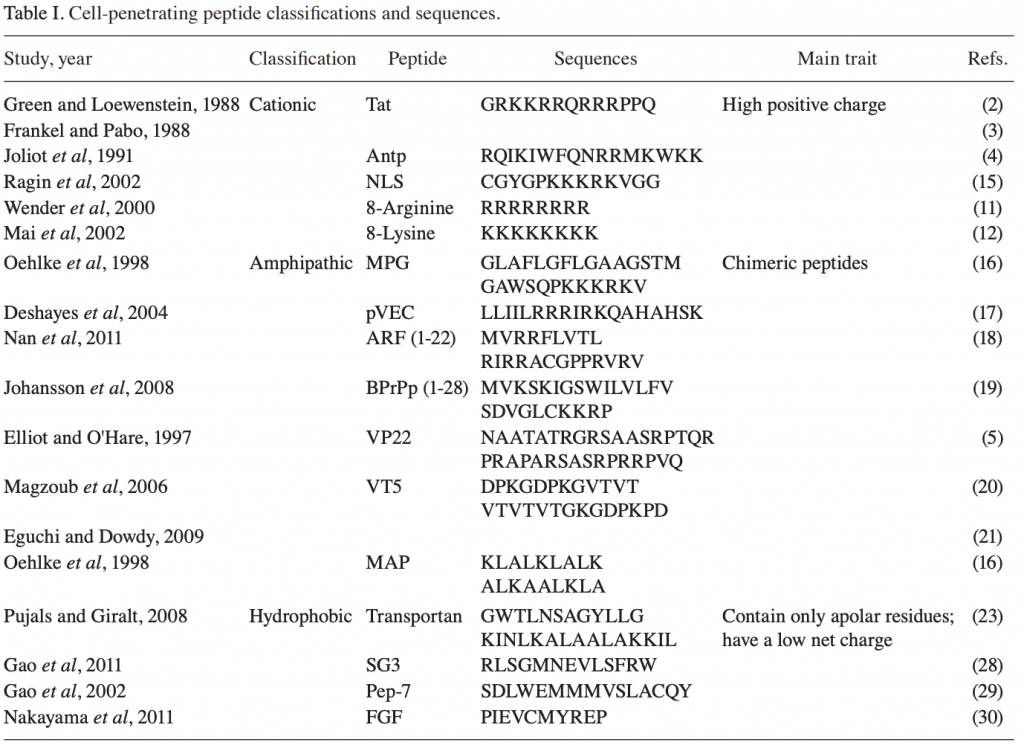
Cell-penetrating peptides (CPPs) are a promising class of short peptides with the ability to translocate across the cell membrane.
In general, CPPs can be divided into three classes: Cationic, amphipathic and hydrophobic. Cationic peptides are a class of peptides that contain a high positive charge such as arginine-based peptides R8. Amphipathic CPPs are chimeric peptides such as SV40 NLS PKKRKV. Hydrophobic CPPs are derived from signal peptide sequences and contain only apolar residues such as transportan and stapled peptides.
CPPs have been widely used as a delivery vector due to their high transduction efficiency and capacity for delivering large molecules into a cell. CPPs have the capability to deliver various cargoes without causing any cellular injury. Thus, a wide range of CPP applications
Application of cell-penetrating peptides:
- Imaging: CPPs can function as vectors to carry fluorescent particles into cells due to their internalization properties and have become promising tools for delivering imaging agents, contrast agents, and quantum dots in the field of imaging. The advantage of such imaging technology is the ability to visualize and quantify biomarkers or biochemical and cellular processes, detect the stage of diseases, identify the extent of disease, and measure the effect of treatment.
- Anti-inflammation therapy: Antisense peptide nucleic acids (PNAs) have been shown to specifically inhibit gene expression and growth of E.coli, and are a promising anti-inflammation agent.
- Tumor therapy: CPP-delivered anticancer therapeutics can increase the cellular membrane permeability of anticancer drugs
to target tumor cells, expanding the broad application of CPPs in tumor therapy. - Nucleic acid and protein delivery: CPPs can facilitate the cellular uptake of large molecules and have been developed as a delivery tool for nucleic acids and proteins. siRNA has been widely used for gene silencing and used to treat diseases such as cancer, infectious diseases, and genetic disorders.
- Viral delivery: CPPs can also be applied to enhance the efficiency of viral transduction. CPP‑modified Adv as a delivery vector is an attractive tool for transducing cells and gene therapy.
